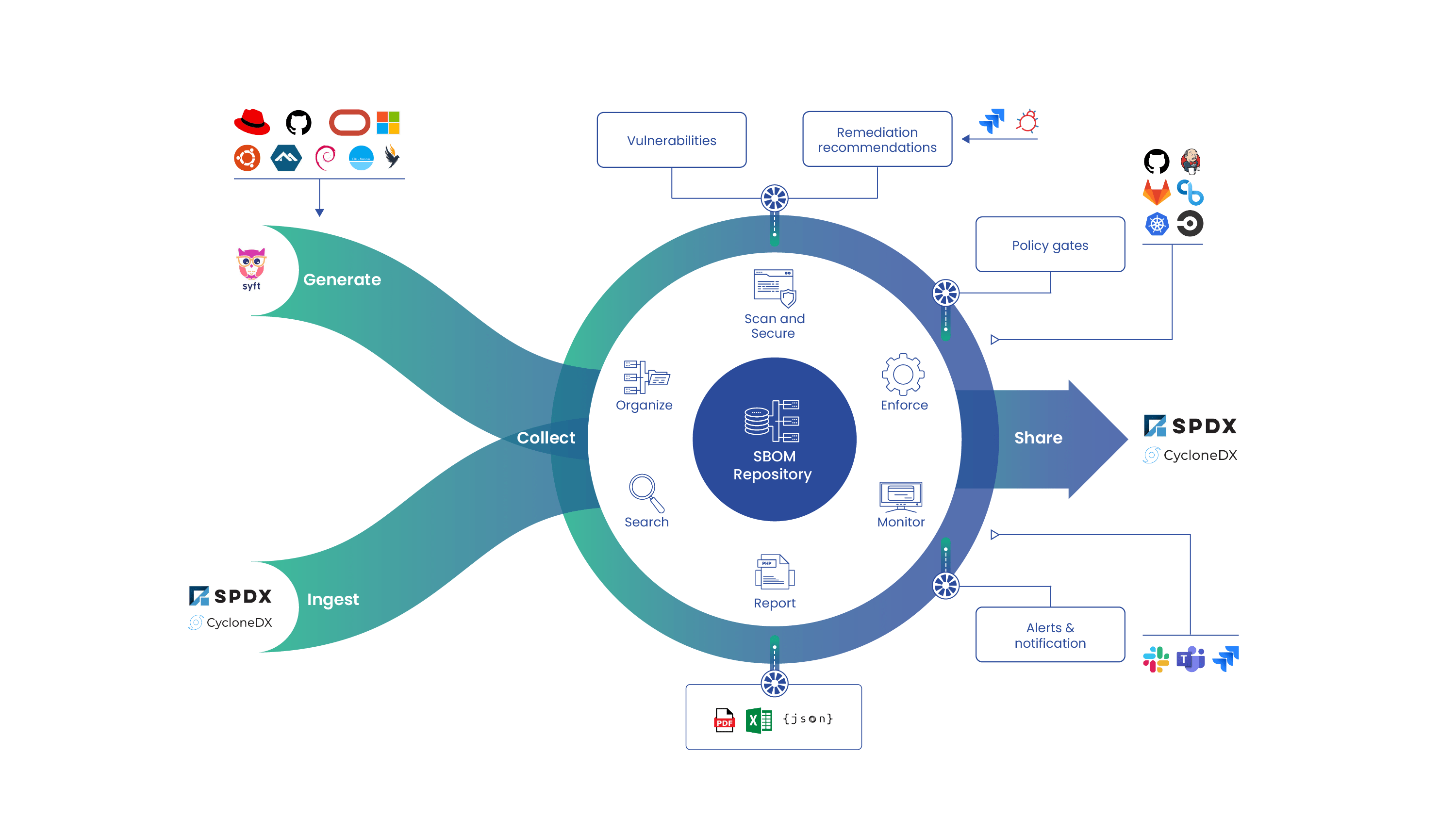The software bill or materials, or SBOM, is foundational for end-to-end software supply chain management and security. Knowing what’s in software is the first step to securing it. Think of an SBOM like an ingredients label on packaged food: If there’s a toxic chemical in your can of soup, you’d want to know before eating it.
SBOMs are critical not only for identifying security vulnerabilities and risks in software but also for understanding how that software changes over time and potentially becomes vulnerable to new threats. In Innovation Insight for SBOMs, Gartner recommends integrating SBOMs throughout the software development lifecycle to improve the visibility, transparency, security, and integrity of proprietary and open-source code in software supply chains.
The Role of SBOMs in Securing Software Supply Chains
Gartner estimates that by 2025, 60 percent of organizations building or procuring critical infrastructure software will mandate and standardize SBOMs in their software engineering practice — a significant increase from less than 20 percent in 2022. However, organizations that are using open-source software and reusable components to simplify and accelerate software development are challenged with gaining visibility into the software they consume, build, and operate. And without visibility, they become vulnerable to the security and licensing compliance risks associated with software components.
SBOMs are an essential tool in your security and compliance toolbox. They help continuously verify software integrity and alert stakeholders to security vulnerabilities and policy violations.
To achieve software supply chain security at scale, Gartner recommends that software engineering leaders integrate SBOMs into their DevSecOps pipelines to:
- Automatically generate SBOMs for all software produced
- Automatically verify SBOMs for all open source and proprietary software consumed
- Continuously assess security and compliance risks using SBOM data before and after deployment
Gartner underscores the importance of integrating SBOM workflows across the software development lifecycle, noting that “SBOMs are an essential tool in your security and compliance toolbox. They help continuously verify software integrity and alert stakeholders to security vulnerabilities and policy violations.”
Who Should Use SBOMs
Citing U.S. National Telecommunications and Information Administration (NTIA) recommendations, Gartner identifies three primary entities that benefit from SBOM adoption:
- Software producers: Use SBOMs to assist in the building and maintenance of their supplied software
- Software procurers: Use SBOMs to inform pre-purchase assurance, negotiate discounts, and plan implementation strategies
- Software operators: Use SBOMs to inform vulnerability management and asset management, to manage licensing and compliance, and to quickly identify software and component dependencies and supply chain risks
SBOM Tools Evaluation
Gartner cautions that SBOMs are not intended to be static documents and that every new release of a component should include a new SBOM. When evaluating open-source and commercial SBOM tools for SBOM generation and management, Gartner advises organizations to select tools that provide the following capabilities:
- Create SBOMs during the build process
- Analyze source code and binaries (like container images)
- Generate SBOMs for those artifacts
- Edit SBOMs
- View, compare, import, and validate SBOMs in a human-readable format
- Merge and translate SBOM contents from one format or file type to another
- Support use of SBOM manipulation in other tools via APIs and libraries
By generating SBOMs in the build phase, developers and security teams can identify and manage the software in their supply chains and catch bad actors early before they reach runtime and wreak havoc.




